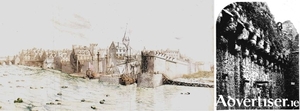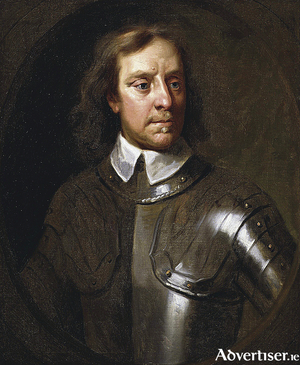Search Results for 'Cromwells army'
4 results found.
Our fortified city

The town of Galway was virtually an independent city state, self-contained politically and ecclesiastically, relying on its own resources as it was cut off from the central English authority until the 16th century. Then, the Tudors began to extend their influence westwards so that the city gradually came totally under their dominion. The real symbol of that growing influence was the fortifications, four in number, raised to defend this all-important location against all enemies, notably France and Spain.
Warden Bodkin’s right hand is missing…
During the afternoon and evening of Sunday July 12 1691 the people of Galway could hear the distant thud of cannons as two armies in the Cogadh na Dá Rí (war of the two kings) was nearing its climax. The Irish army, led by the inept French general, Charles Chalmont, Marquis de Saint-Ruhe, known as Saint Ruth, and the heroic Earl of Lucan, Patrick Sarsfield, had taken a stand on Kilcommodon Hill, below which lay the village of Aughrim, some 5km from Ballinasloe, Co Galway.
The Protestant enclave of Inishbiggle

In the 1650s, Catholics were uprooted from their productive, arable, lands in several Irish counties by Oliver Cromwell’s Protestant army and forced at musket point to desolate, barren, Connacht. Their confiscated lands, the better holdings in Ireland, were distributed to Protestant settlers, Cromwell’s army as pay, and carved up to pay debts. Maps of Ireland, pre and post Cromwell, detailing the regression of the predominantly Catholic associated Irish language and customs point to a culture that was deliberately and officially forced to areas thought of as being so inhospitable they would not survive. County Mayo was included among these religious and cultural ghettoes. The living standards of the banished Catholics fell dangerously low and remained so for centuries. Christian duty led some within the Protestant clergy to later establish evangelical missions in the wild Irish west to give relief to the descendants of those very same Catholics. Salvation and, dishonourably, food were offered through conversion to Protestantism. Whereas 17th century Protestants believed it was God's will that godless Catholics be sent to suffer and perhaps perish in Mayo, 19th century Protestants believed it was His will that these (still godless) Catholics be reclaimed so that they might be saved. The Rev Edward Nangle's Achill Island Mission set out to do just that in 1831.


